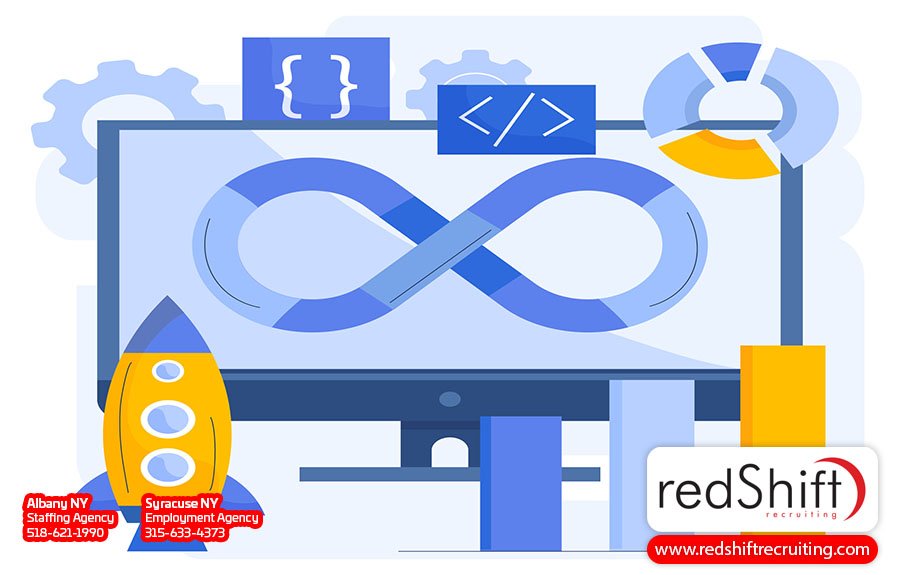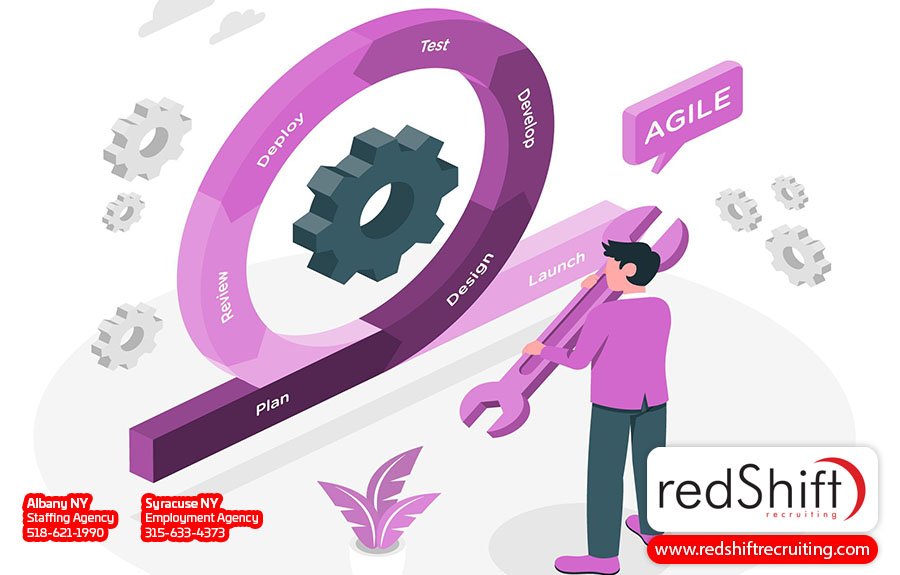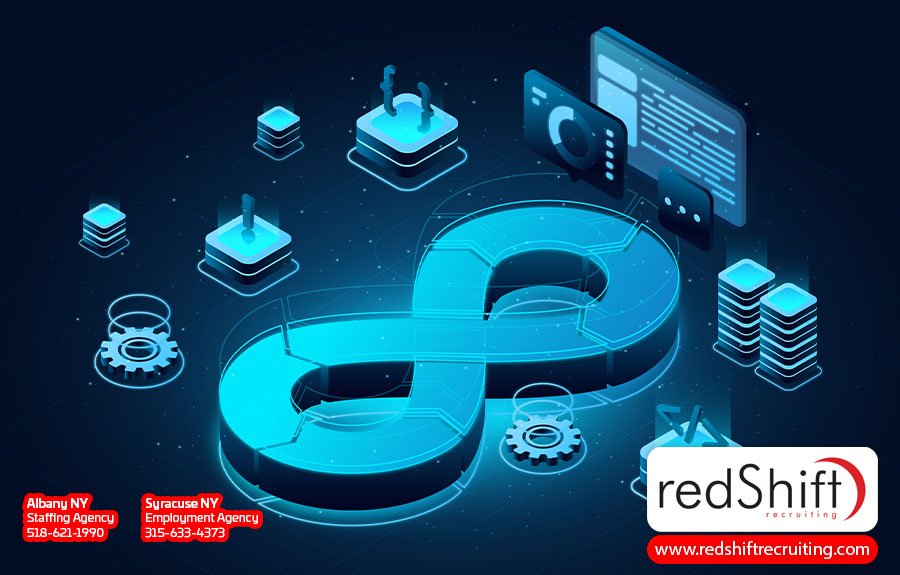CI/CD: The Secret Weapon for Agile Development (and Your Career!)
Mastering modern software development requires more than just technical skills; it demands a deep understanding of methodologies that boost both efficiency and adaptability. At the forefront of these agile approaches is Continuous Integration and Continuous Delivery/Deployment (CI/CD), a practice that has been pivotal in transforming the process of software development and deployment. This article sets out to explore the essential elements of CI/CD, highlighting its role in accelerating development cycles, ensuring high-quality code through automated testing, and facilitating seamless integration and deployment processes. CI/CD empowers teams to adopt a dynamic, feedback-driven approach to product evolution, ensuring continuous improvement and aligning closely with customer needs and market demands.
What Is CI/CD?
Continuous Integration and Continuous Delivery/Continuous Deployment (CI/CD) offers a transformative approach to streamlining the software development process and enhancing collaboration between development and operations teams. At its core, CI/CD is all about continuous testing and automation, revolutionizing the software development life cycle by automating key processes. It enables development teams to seamlessly integrate code changes into a shared repository, ensuring that the software is always in a releasable state. Automated tests play a crucial role in this workflow, validating changes and providing fast feedback and error detection. This streamlined approach helps code releases happen faster and with fewer errors, significantly reducing the time and effort spent on debugging and fixing problems later.
The difference between CI (Continuous Integration) and CD (Continuous Delivery/Continuous Deployment) lies in the extent of automation. CI focuses on the automated integration of code changes into a shared repository, ensuring that these changes do not break the product. CD extends this automation to include the automatic release of the validated changes to production environments, with Continuous Delivery requiring manual approval for releases and Continuous Deployment doing so automatically.
The workflow revolution introduced by CI/CD is central to its impact, automating the end-to-end process from code integration to deployment. This includes automated tests for unit tests and higher-level integration tests, automatic building of the code, and its deployment to various environments. Automation not only enhances developer productivity by removing manual bottlenecks but also ensures that software delivery is consistent, reliable, and rapid.
Additionally, CI/CD incorporates critical principles such as version control integration, ensuring that all code changes are tracked and managed efficiently. Automated testing and continuous feedback loops facilitate a culture of continuous improvement, while feature flags and rollbacks offer a safety net, enabling teams to introduce and test new features without disrupting the user experience. CI/CD also excels at incorporating user feedback into the development process, enabling teams to continuously refine their product based on real-world usage and preferences. Infrastructure as code further streamlines deployment and management of the application infrastructure, making the entire software delivery process more scalable and manageable.
Integrated development environments (IDEs) and tools that support CI/CD also complement these processes by providing developers with the capabilities to easily run unit tests, integrate code changes, and deploy updates with minimal effort. This support not only accelerates development velocity but also ensures that each software iteration is robust and deployment-ready.
Ultimately, CI/CD empowers teams to deliver high-quality code with greater speed and efficiency, significantly improving the software development life cycle. By embracing these principles and technologies, organizations can achieve higher developer productivity, faster software delivery, and ultimately a stronger competitive advantage.
Harnessing CI/CD for Professional Advancement
The demand for professionals proficient in CI/CD is growing, as these practices are crucial for achieving high deployment frequency, comprehensive test coverage, and efficient automated builds. By mastering CI/CD tools and practices, you'll enhance your ability to contribute to faster code releases, implement incremental code changes, ensure thorough tests and bug fixes, and position yourself as a standout candidate for hiring managers.
Learning CI/CD also opens the door to substantial career growth potential by providing more opportunities to work with cross-functional teams, collaborate on complex projects, and solve technical challenges. Skills in navigating version control systems, managing the CI/CD pipeline, and executing automated builds elevate your role within a team, marking you as a key player in streamlining software delivery processes and making a tangible difference in your team's performance. Meanwhile, the process of integrating CI/CD into workflows encourages a proactive approach to security that incorporates security practices from the onset of development. This focus on "shift-left" security helps in identifying and mitigating vulnerabilities early, further elevating your value as a security-conscious developer in a world where cyber threats are increasingly prevalent.
Investing in CI/CD not only elevates your technical prowess but also polishes a range of soft skills crucial for professional growth. Through the practical application of CI/CD in scenarios like managing source code and database scripts, you cultivate problem-solving capabilities, analytical thinking, and collaboration skills. Furthermore, mastering CI/CD enriches your skill set with effective communication, resilience in overcoming development hurdles, and the ability to swiftly adapt to new technologies. These competencies foster a culture of efficiency and collective achievement within development teams, enhancing your professional development and positively impacting your job performance. Ultimately, embracing CI/CD practices arms you with the adaptability, eagerness for continuous learning, and teamwork spirit essential for thriving in the dynamic IT field, laying a robust foundation for your career.
Streamlining Development With CI/CD
CI/CD is not just a methodology but a catalyst for transformation within teams, supporting agility and efficiency in software development and delivery. By integrating CI/CD, teams attain faster feedback loops and more concise release cycles, allowing for nimble adaptation to the rapidly evolving demands of the market and customer expectations. Automated code integration and testing significantly reduce the need for manual human intervention, enhancing workflow efficiency and drastically lowering the risk of code failures in production environments. The elevation in software quality and the speed with which new features are rolled out provide a distinct agile advantage to organizations in a competitive environment.
Implementing CI/CD also supports quality control efforts by weaving automated testing and early error detection directly into the development life cycle. This preemptive approach to catching bugs during the deployment process significantly reduces disruptions and addresses potential issues well before they become larger problems, easing the burden of late-stage fixes while contributing to the delivery of a more stable and reliable product to end-users.
Additionally, CI/CD redefines traditional development workflows by cutting down on redundant tasks and empowering developers to dedicate their efforts to more strategic, value-added work. For instance, the strategic use of feature flags offers controlled, gradual release of new features, meticulously managing the user experience. Through a shared source code repository and automated integration tests, development teams can smoothly commit code, promoting an environment rich in collaboration and transparency. Meanwhile, the operations team is able to concentrate on managing production environments and enhancing system stability, tackling complex challenges that elevate system performance.
Ultimately, incorporating CI/CD into your team's workflow lays the groundwork for a development ecosystem that is adaptable, quality-centric, and collaborative at its core. By combining development practices with these Agile principles, organizations can adeptly navigate the intricacies of modern software delivery, securing their position and maximizing customer satisfaction.
Implementing CI/CD in Your Organization
Adopting CI/CD within your organization marks a pivotal move towards more collaborative, efficient, and automated software development. This strategic integration allows for the optimization of the development cycle, enabling faster delivery of new features and enhancements to users. Through the automation of critical tasks such as static code analysis, security testing, test automation, and regression tests, organizations can uphold superior standards of code quality and security. These measures not only streamline operations but also instill a robust foundation for security testing within the development process.
Implementing CI/CD successfully starts with selecting the tools and platforms that align with the team's size, existing infrastructure, and specific requirements. Popular CI/CD tools like Jenkins, GitLab CI/CD, and CircleCI offer varied functionalities tailored to different development needs. Jenkins, with its extensive plugin ecosystem, provides great flexibility and customization. GitLab CI/CD stands out for its seamless integration within the GitLab ecosystem, offering a unified experience from code management to deployment. Meanwhile, CircleCI is known for its simplicity and ease of use, particularly in cloud-based development environments. Each platform has its pros and cons, ranging from ease of integration and scalability to the learning curve required for effective use.
Keep in mind that transitioning to CI/CD is not without its challenges, however. Organizations may face hurdles such as the initial investment in setting up and configuring the pipeline, cultural resistance within development and operations teams, the need for ongoing maintenance, integration complexities with existing tools, and addressing security concerns. To overcome these challenges, it's crucial to foster a culture that values continuous improvement and innovation, train teams to embrace a DevOps mindset, and foster a collaborative approach between development and operations teams. Encouraging open communication and collaboration between DevOps teams can significantly mitigate resistance. Additionally, integrating DevSecOps practices early in the development process ensures that security testing and user feedback are integral parts of the development cycle. This integrates security practices into the entire development lifecycle, maintaining the integrity of the software delivery pipeline.
Navigating the Future of CI/CD
The fusion of AI and continuous security with CI/CD is transforming modern software development practice, bringing a new level of automated testing and code quality. AI-powered automation promises to redefine the deployment of new code, with pioneering tools like DeepCode and CAST AI optimizing issue detection and code quality prior to the production environment. This advancement in technology not only accelerates the development cycle but also enhances accuracy and efficiency in spotting issues, paving the way for self-healing pipelines capable of correcting detected anomalies automatically.
Continuous security marks another shift in development priorities, weaving security measures throughout the CI/CD pipeline for early vulnerability detection and compliance assurance. The embrace of DevSecOps and Shift Left Security practices underlines a preemptive security stance, with tools such as Snyk and Aqua Security conducting thorough security checks. This move towards early and integral security measures demonstrates the importance of security as an intrinsic element of modern software development practice. The integration of these technologies emphasizes the need for teams to evolve and highlights the significance of upskilling, grasping project management impacts, and incorporating new technologies into established workflows seamlessly.
Furthermore, the CI/CD landscape continues to diversify through platform specialization, edge computing integration, and a cloud-native focus. Tailored platforms are emerging to meet specific needs, ranging from GitOps for infrastructure management to platforms designed for robust security compliance. Edge computing facilitates nearly instantaneous builds and deployments, supporting distributed applications with innovative solutions like GitOps at the Edge and Serverless CI/CD. Transitioning to cloud-based CI/CD platforms, including AWS CodeBuild, Google Cloud Build, and Azure DevOps, further reflects a shift towards scalability, flexibility, and cost-efficiency. These changes not only help organizations navigate the increasing complexity of projects but also spur innovation, empowering them to rapidly adapt to market changes and user demands. The integration of AI, security, and cloud-native technologies is rapidly altering the CI/CD space, guiding modern software development into a future where efficiency, security, and adaptability are at the forefront.
Frequently Asked Questions
What Are Some Common Challenges of Implementing CI/CD?
Implementing CI/CD may present challenges such as resistance to change (often due to concerns about job security or discomfort with new processes), a gap in necessary knowledge or skills, and the technical hurdles of integrating diverse tools and technologies. To navigate these challenges effectively, it's crucial to cultivate an environment that values collaboration and continuous learning. Providing targeted training and robust support can help address fears and skill deficits, enabling teams to embrace the changes positively. This approach not only facilitates the smooth adoption of CI/CD practices but also enhances organizational efficiency and accelerates product delivery, leading to higher project success rates and customer satisfaction.
How Does CI/CD Impact Job Roles and Responsibilities Within an IT Team?
The implementation of CI/CD significantly reshapes job roles and responsibilities in IT teams, emphasizing collaboration, efficiency, and the streamlining of the software development lifecycle for quicker, more consistent releases. This shift requires all team members, from developers and testers to operations personnel, to adapt to a more dynamic environment characterized by rapid code updates and a commitment to ongoing enhancement. Embracing CI/CD alongside Agile methodologies presents a valuable opportunity for team members to upgrade their skills, foster adaptability, and actively contribute to their team's achievements.
What Skills or Certifications Can Enhance an Individual's Career in CI/CD?
To advance in the CI/CD field, mastering certain skills and obtaining certifications can significantly benefit your career. Proficiency in tools such as Jenkins, Git, and Docker is crucial, along with a solid understanding of scripting languages like Bash or Python. Earning relevant certifications such as the AWS Certified DevOps Engineer, Microsoft Certified: Azure DevOps Engineer Expert, Certified Kubernetes Administrator (CKA), and Docker Certified Associate (DCA) can distinguish you in this competitive area. Beyond technical expertise, soft skills like effective communication, teamwork, and problem-solving are essential due to the collaborative nature of CI/CD practices. Keeping abreast of the latest industry trends and technologies is also key to staying relevant and effective in your role.
How Does CI/CD Align With Agile Methodologies, Such as Scrum or Kanban?
CI/CD seamlessly complements Agile methodologies like Scrum and Kanban by bolstering collaboration, efficiency, and the automation of development processes. For Scrum teams, CI/CD's automated testing aligns with the rhythm of sprint reviews and retrospectives, ensuring each iteration or "sprint" (a set period during which specific work must be completed and made ready for review) benefits from immediate feedback and quality checks. Similarly, in a Kanban framework, CI/CD's emphasis on small, frequent deliveries mirrors Kanban's focus on limiting work-in-progress (WIP), which refers to the maximum amount of tasks that can be in the stages of development at any one time. This synergy not only accelerates the delivery of high-quality software but also enhances project manageability, fostering an environment where continuous improvement is ingrained and teams are more equipped to excel in agile settings.
Conclusion
By automating critical aspects of the development cycle, CI/CD empowers teams to deliver with speed, precision, and flexibility. It goes beyond optimizing processes, effectively fostering a collaborative environment that bridges the gap between development and operations teams. CI/CD is far more than an industry buzzword; it signifies a significant shift towards creating resilient, responsive, and user-centric products. For organizations and IT professionals poised to enhance their development strategies, integrating CI/CD practices provides a direct route to faster deployments, enhanced code quality, and, ultimately, heightened customer satisfaction. Whether embarking on this journey for the first time or seeking to refine existing methodologies, the principles of CI/CD can be an invaluable guide for those aspiring to achieve peak efficiency and innovation in their software delivery.
Article Author:
Ashley Meyer
Digital Marketing Strategist
Albany, NY






